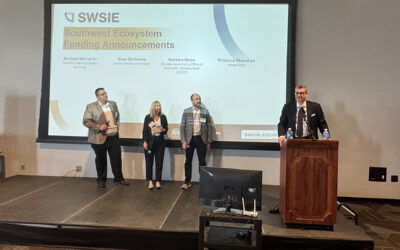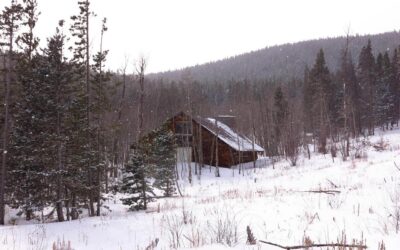Save Red Rock Partners with DRI to “Make It Rain” in Red Rock Canyon
September 1, 2022
LAS VEGAS, Nev.
Above: The sun shines on Red Rock Canyon National Conservation Area.
Photo courtesy of Pengcheng Zhu (iStock).
Environmental nonprofit raises funds to enable cloud seeding technology in the region
Save Red Rock is partnering with DRI to fund a cloud seeding program which will augment precipitation in the Spring Mountains, helping to replenish the aquifers within the Red Rock Canyon National Conservation Area. The partnership is working to alleviate some of the devastating effects of drought by stimulating additional snowfall in the winter and rainfall in the summer from naturally-occurring storm clouds in the area. The nonprofit is organizing a community crowdfunding campaign, aptly titled “Make it Rain,” to raise $150,000 towards the multi-seasonal cloud seeding project.
“Drought conditions are at a critical level for much of the flora and fauna in the southwest,” says Save Red Rock President Heather Fisher. “The health and beauty of our outdoor sanctuaries like Red Rock Canyon are at risk. Along with our climate scientists, it’s up to all of us to act now and protect these endangered ecosystems for the long term.”
Cloud seeding is a safe and effective method used all over the world to enhance precipitation. It works by sending silver iodide, a natural and non-toxic compound, into a potential storm cloud which increases the likelihood of precipitation. Winter seeding techniques feature ground-based generators operated remotely by meteorologists who monitor conditions and carefully evaluate when to seed. Each generator has the potential of adding an average of 3,000 acre feet of snow melt per year. DRI’s last project in Lee Canyon proved even more successful, generating 5,656 acre feet, or approximately 1.8 billion gallons.
DRI has been pioneering cloud seeding programs since the early 1960s. They now offer time-tested methods that are proven to enhance snowfall in five mountain ranges, including the Lake Tahoe Basin (CA/NV), the Spring Mountains (NV), the Santa Rosa Mountains (NV), the San Juan Mountains (CO), and the Upper Colorado River Headwaters region (CO).
“Save Red Rock is the ideal partner for us on this project,” said DRI’s Program Director Frank McDonough. “Desert Research Institute is a proud pioneer of weather optimization research and practices, which have been used successfully for generations. However, as we focus on the science, it’s crucial that we work with other community organizations to fund, place and promote the use of our equipment.”
Community leaders have already started committing to the fundraising effort, including sponsor Brett Torino, Founder of The Brett Torino Foundation who will offer Torino Ranch in Lovell Canyon as the host site for the winter cloud seed generators; and Jeremy Burkhardt, Chairman of Origin Acoustics, who donated the first $25,000 to kickstart the crowdfund.
“Business has been good to me and it’s important to give back,” says Burkhardt. “I’m supporting Save Red Rock in this cloud seeding project because I believe in helping the environment and the beautiful canyon I love.”
More information:
Additional donations to support DRI’s cloud seeding program for Save Red Rock can be made at https://saveredrock.com/make-it-rain/. For those interested in learning more about how cloud seeding works, DRI and Save Red Rock will be hosting a public webinar on Thursday, Sept. 8 at 10 am. Pre-registration is encouraged and available here.
###
About Save Red Rock
Save Red Rock is a 501c3 organization with a mission to preserve, protect, and enhance the natural, cultural, recreational, and scenic resources in and around the Red Rock Canyon National Conservation Area to ensure natural resource sustainability and promote responsible recreational enjoyment for all user groups now and for future generations.
About the Cottonwood Springs Water Stewards
The Cottonwood Springs Water Stewards is a committee of Save Red Rock whose goal is to preserve the springs and aquifers in Red Rock Canyon. Members of the Stewards include experts in botany, environmental science, land management and more.
About DRI
The Desert Research Institute (DRI) is a recognized world leader in basic and applied environmental research. Committed to scientific excellence and integrity, DRI faculty, students who work alongside them, and staff have developed scientific knowledge and innovative technologies in research projects around the globe. Since 1959, DRI’s research has advanced scientific knowledge on topics ranging from humans’ impact on the environment to the environment’s impact on humans. DRI’s impactful science and inspiring solutions support Nevada’s diverse economy, provide science-based educational opportunities, and inform policymakers, business leaders, and community members. With campuses in Las Vegas and Reno, DRI serves as the non-profit research arm of the Nevada System of Higher Education. For more information, please visit www.dri.edu.


